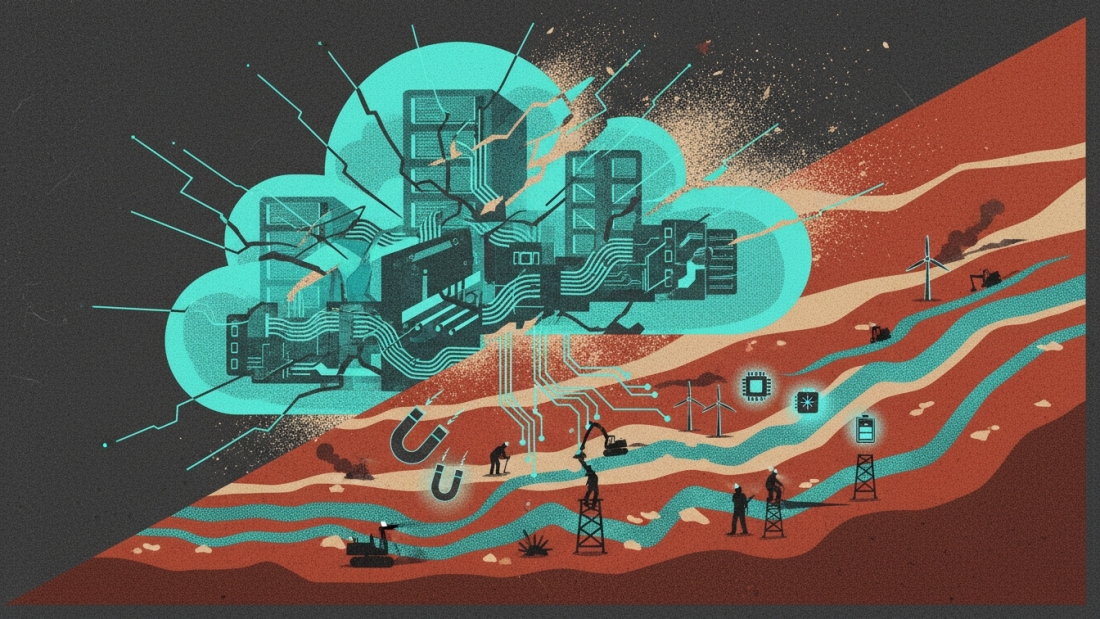The story doesn’t start in Silicon Valley.
It starts in the dirt.
Beneath the red dust of Inner Mongolia, miners pull shimmering rock from the ground unremarkable to the eye but vital to everything that defines the modern era: magnets, chips, lasers, batteries, wind turbines, and weapons. These are the rare earths the invisible foundation of the intelligent age.
And now, China is tightening its grip on them.
The Quiet Power Shift
In late 2024, Beijing enacted sweeping Rare Earth Management Regulations. On paper, they sounded bureaucratic licensing, inventory tracking, export controls. In reality, they were the blueprint for something much bigger: control of the physical backbone of artificial intelligence.
Then, in 2025, came the next phase Notice 61, a policy so audacious it almost sounded fictional. If a product made anywhere in the world contained rare-earth materials originally sourced from China, it could now fall under Chinese export approval. That meant the rules of supply didn’t stop at China’s borders. They followed the materials wherever they went.
It wasn’t an embargo. It was leverage quiet, precise, and total.
CHINA JUST WEAPONIZED THE ENTIRE RARE EARTH SUPPLY CHAIN
— Aaron Slodov (@aphysicist) October 9, 2025
get used to reading chinese MOFCOM bulletins because they're writing american industrial policy now.
announced today: any product containing >0.1% chinese rare earth materials needs beijing's approval before re-export to… pic.twitter.com/cdGspel0XA
The Material Soul of Artificial Intelligence
We like to think of AI as software—floating in clouds, powered by math, detached from matter.
But that’s the illusion.
Every line of code runs on chips made from gallium, germanium, indium, and neodymium. Every data center breathes through magnets, coolers, and batteries that rely on dysprosium and terbium. Even the electric grids that feed those centers pulse through copper and graphite—both increasingly under the shadow of Beijing’s supply web.
So when China tightens exports, it doesn’t just slow down EVs or wind farms. It puts a hand on the spine of AI itself.
That’s the Achilles heel: intelligence that depends on atoms controlled by someone else.
CHINA IS SCHOOLING TRUMP:
— Eric 𝕏 (@WorldStrategist) October 11, 2025
A THREAD ON RARE EARTHS
1/
Beijing controls 70% of rare earth mining, 90% of processing, and 93% of permanent magnet production. pic.twitter.com/2Tgrc84BCS
Washington Reacts — and Wall Street Panics
The United States knows it’s exposed.
In Washington, the response has been part urgency, part theater. Billions have flowed through the Defense Production Act, grants for rare-earth separation, magnet plants in Texas and California, and new tariffs floated as pressure builds.
Trump, smelling both opportunity and nostalgia, framed it in classic rhetoric: “We’re bringing the mines back. We’re not going to let China choke us out.”
But the timeline doesn’t care about speeches. Mining takes years. Processing takes longer. The West is trying to rebuild a supply chain China has spent three decades perfecting. In the meantime, markets did what markets always do they panicked.
Crypto plunged in a flash crash that wiped out billions. Gold, that ancient barometer of trust, shot to record highs near $4,000 an ounce. It wasn’t inflation that drove it. It was fear, fear that the invisible architecture of globalization was cracking.
It has just been learned that China has taken an extraordinarily aggressive position on Trade in sending an extremely hostile letter to the World, stating that they were going to, effective November 1st, 2025, impose large scale Export Controls on virtually every product they…
— Trump Truth Social Posts On X (@TrumpTruthOnX) October 10, 2025
The Bretton Woods Illusion
For eighty years, the global economy has run on a quiet assumption: that the monetary world (dollars, debt, liquidity) and the material world (metals, minerals, energy) could live separately.
Bretton Woods birthed that illusion—a belief that whoever managed the money controlled the power.
But the past year has shown us something ancient:
Money doesn’t matter if you can’t mine the metal.
The AI revolution revealed how interconnected it all is—how the digital relies on the physical, and how the physical is now geopolitical.
The petrodollar age once tied money to oil. The next era may tie it to rare earths—the true oil of the intelligent age.
There it is:
— The Kobeissi Letter (@KobeissiLetter) October 13, 2025
Gold has officially posted its highest monthly RSI reading in HISTORY, at 91.8.
Gold has only seen 4 red months since March 2024.
In retrospect, it will be so obvious what this all means. https://t.co/OwWpgCd4js pic.twitter.com/oTip8QXW5Z
The Coming Reckoning
The world is reorganizing, not collapsing.
China is asserting material power.
The U.S. is racing to reindustrialize.
And in between, markets are re-pricing what it means to trust the system.
Gold’s rise isn’t just an inflation hedge—it’s a rebellion against abstraction.
Crypto’s fall isn’t a rejection of technology—it’s a reminder that digital dreams still need physical roots.
And AI, for all its brilliance, is learning the oldest lesson in history: you can’t outthink geology.
This was the biggest liquidation in history of crypto
— fabiano.sol (@FabianoSolana) October 11, 2025
FTX crash: $1 Billion in liquidations
Covid crash: $1 Billion in liquidations
Today: $19 Billion in liquidations
Here's what happened in chronological order 🧵 pic.twitter.com/jOpcMguIlQ
From Code to Clay
The next decade won’t be defined by who has the smartest models. It will be defined by who controls the minerals that make those models real.
We’re entering an age where intelligence, energy, and sovereignty converge back into matter.
The future isn’t in the clouds—it’s under our feet.
And as the world scrambles to secure its next shipment of neodymium, we’re learning that AI’s greatest weakness isn’t in its code…It’s in the ground.



Leave A Comment